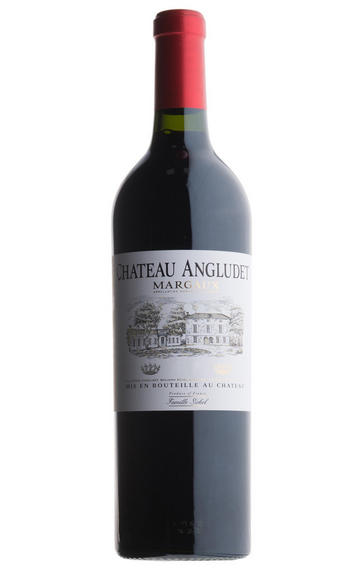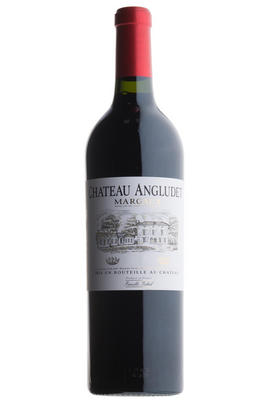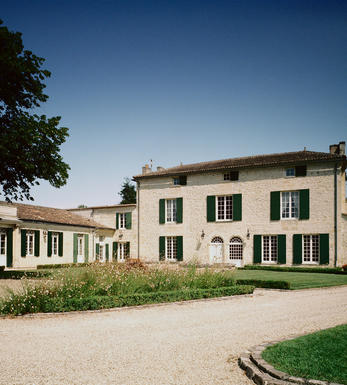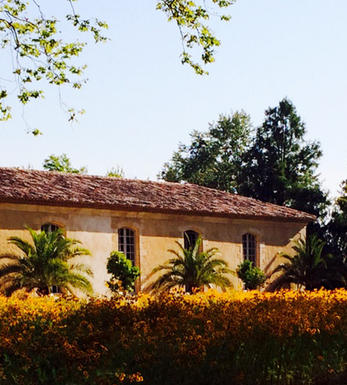
2010 Château Angludet, Margaux, Bordeaux

Critics reviews
Robert M. Parker, Jr. - 28/02/2013
Jancis Robinson MW- jancis robinson.com 18 Apr 2011
James Suckling - Wine Spectator - Mar-2013
90 Robert Parker- Wine Advocate- Feb 2013
The dark plum/purple-hued 2010 d’Angludet is unquestionably a sleeper of the vintage. Sweet licorice-infused black currant, asphalt and smoke aromas emerge from this heady, ripe, well-endowed cuvee. Sweet tannin, lush fruit and loads of glycerin suggest this lovely Margaux will drink well during its first 12-15 years of life.
89-91 Robert Parker- Wine Advocate- May 2011
About this WINE

Château Angludet
Château d`Angludet is a Cru Bourgeois property that now regularly produces wines of grand cru classé quality. D'Angludet is located in the Margaux appellation and its vineyards are situated at the 3-way intersection of the Cantenac, Arsac and Labarde communes.
The late Peter Sichel purchased d'Angludet in 1961 and it became his home for the next 37 years. The vineyards and cuverie were in a deplorable condition when Sichel took over and it is due to his sheer will and determination that d`Angludet enjoys its high reputation today.
D'Angludet's 32 hectares of vineyards are planted with Cabernet Sauvignon (58%), Merlot (35%), Cabernet Franc (5%) and Petit Verdot (2%). The grapes are fermented in temperature-controlled, stainless steel tanks and the wine is then aged in oak barriques (25-33% new) for 12 months. The wine is bottled unfiltered.

Margaux
If Pauillac can be seen as the bastion of ‘traditional’ Red Bordeaux, then Margaux represents its other facet in producing wines that are among Bordeaux’s most sensual and alluring. It is the largest commune in the Médoc, encompassing the communes of Cantenac, Soussans, Arsac and Labaude, in addition to Margaux itself. Located in the centre of the Haut-Médoc, Margaux is the closest of the important communes to the city of Bordeaux.
The soils in Margaux are the lightest and most gravelly of the Médoc, with some also containing a high percentage of sand. Vineyards located in Cantenac and Margaux make up the core of the appelation with the best vineyard sites being located on well-drained slopes, whose lighter soils give Margaux its deft touch and silky perfumes. Further away from the water, there is a greater clay content and the wines are less dramatically perfumed.
Margaux is the most diffuse of all the Médoc appelations with a reputation for scaling the heights with irreproachable wines such as Ch. Margaux and Ch. Palmer, but also plumbing the depths, with too many other châteaux not fulfilling their potential. There has been an upward shift in recent years, but the appellation cannot yet boast the reliability of St Julien. However, the finest Margaux are exquisitely perfumed and models of refinement and subtlety which have few parallels in Bordeaux.
Recommended Châteaux: Ch. Margaux, Ch. Palmer, Ch. Brane-Cantenac, Ch. Rauzan-Ségla , Ch. Dufort-Vivens, Ch. Ferrière, Ch. du Tertre, Ch. Giscours, Ch. d'Angludet.

Cabernet Sauvignon Blend
Cabernet Sauvignon lends itself particularly well in blends with Merlot. This is actually the archetypal Bordeaux blend, though in different proportions in the sub-regions and sometimes topped up with Cabernet Franc, Malbec, and Petit Verdot.
In the Médoc and Graves the percentage of Cabernet Sauvignon in the blend can range from 95% (Mouton-Rothschild) to as low as 40%. It is particularly suited to the dry, warm, free- draining, gravel-rich soils and is responsible for the redolent cassis characteristics as well as the depth of colour, tannic structure and pronounced acidity of Médoc wines. However 100% Cabernet Sauvignon wines can be slightly hollow-tasting in the middle palate and Merlot with its generous, fleshy fruit flavours acts as a perfect foil by filling in this cavity.
In St-Emilion and Pomerol, the blends are Merlot dominated as Cabernet Sauvignon can struggle to ripen there - when it is included, it adds structure and body to the wine. Sassicaia is the most famous Bordeaux blend in Italy and has spawned many imitations, whereby the blend is now firmly established in the New World and particularly in California and Australia.


Buying options
Add to wishlist
Description
Taking away the ‘d’ from one of our favourite châteaux has taken absolutely nothing away from Angludet’s spectacular resurgence. Following on from its brilliant 2009, this has done it again. Full, lush, plush and plump, it is seriously generous with terrific ripe red fruits and a very polished seductive finish. It is definitely on my ‘To Buy’ list.
(50% Cabernet Sauvignon, 38% Merlot, 12% Petit Verdot)
Simon Staples, Fine Wine Director
wine at a glance
Delivery and quality guarantee